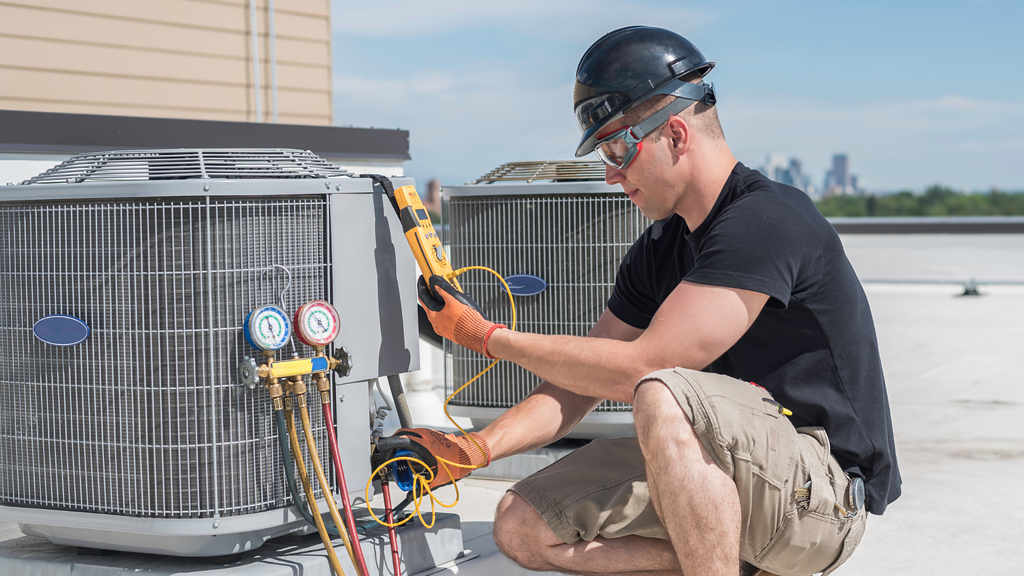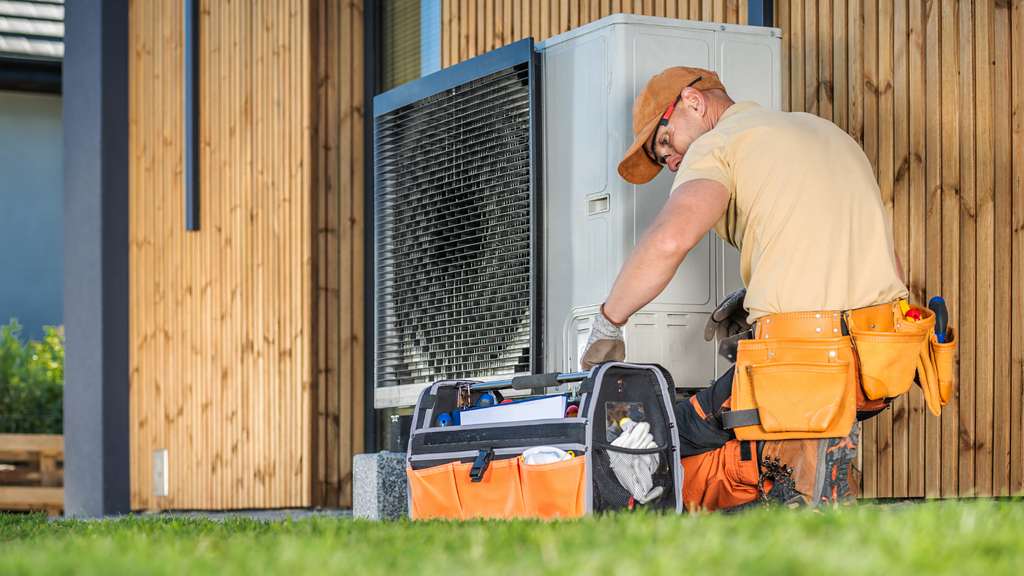Let’s talk about something that keeps your house cozy in winter and cool in summer: your HVAC system. You probably don’t give your HVAC much thought until it decides to take a break at the worst possible moment. Picture this: it’s a scorching July afternoon or a freezing January night, and suddenly, silence. No hum, no air, just discomfort. That’s where regular HVAC servicing comes in. It’s not just about dodging those emergencies.
It’s about keeping your home comfy, your energy bills reasonable, and your air fresh. I’m here to guide you through how often you should service your HVAC system, why it’s a big deal, and what to watch out for. Think of this as a friendly chat about giving your heating and cooling setup the care it deserves.
What Is HVAC Maintenance?
HVAC maintenance is basically all about checkups for your heating, ventilation, and air conditioning system. Just like you take your car for a tune-up, this keeps everything humming along. A technician comes in, takes a close look, cleans things up, and swaps out parts if needed. They might test the thermostat, scrub the coils, replace filters, and ensure all the pieces play nicely together. The point? Catch tiny problems before they grow into wallet-draining disasters. It keeps your system efficient, dependable, and ready for whatever weather hits. You wouldn’t skip a doctor’s visit if you fell off, right? Same idea here, preventive care keeps things smooth.

How Often Should You Schedule HVAC Maintenance?
Most experts agree twice a year works best. Schedule one visit in spring to prep your air conditioning for summer heat. Then, book another in the fall to get your heating ready for winter chills. This rhythm keeps you covered for both extremes. But hold on—your situation might tweak that plan a bit. Two big factors come into play: the age of your system and where you live.
Age
First up, how old is your HVAC? If it’s a newer model, say under five years, the twice-a-year routine usually does the trick. Fresh systems handle wear and tear better. But if your unit has celebrated a decade or more, it might need extra love. Older setups wear out faster, like a car with high mileage. You wouldn’t trust bald tires on a road trip, right? For systems past ten years, consider three visits annually or even quarterly checkups. More frequent care keeps those creaky parts in line.
Region
Next, think about your location. Weather shapes how hard your HVAC works. Live in a place with blazing summers or brutal winters? Your system takes a beating to keep up. Extreme climates demand more frequent attention—maybe an extra visit beyond the standard two. But if you’re in a mild spot where seasons don’t swing wildly, twice a year often suffices. It’s all about balancing care with how much your system sweats. A little tweak based on your zip code makes a big difference.
Why Regular HVAC Servicing Matters
Regular maintenance isn’t just busy work, it pays off in ways you’ll feel every day. Let’s break it down into five solid reasons that’ll convince you to mark those service dates on your calendar.
Prevents Unexpected Breakdowns
First, it stops surprises. Nothing’s worse than your AC dying mid-summer or your heater quitting in a snowstorm. A technician’s visit spots trouble early—think loose wires or worn belts. They fix those small hiccups before your system crashes. It’s like patching a leaky pipe before your basement floods. This heads-off approach saves you from sweaty nights or shivering mornings, not to mention emergency repair costs.
Improves Energy Efficiency
Second, it saves you money on power bills. A tuned-up HVAC runs lean and mean, using less juice to keep your home just right. Clean filters and smooth parts mean it doesn’t strain to do its job. Picture a bike with oiled gears versus one with rusty chains—you pedal less for the same ride. Over months, those savings stack up. Plus, it’s a win for the environment. Who doesn’t love that combo?
Extends System Lifespan
Third, it stretches your HVAC’s years. These setups cost a pretty penny, so you want them to last. Routine care keeps components happy—clean coils, tight connections, fresh filters. It’s like eating veggies and jogging for your health. A little effort now means you delay that big replacement bill. Why buy a new system at 12 years when you could push it to 18?
Maintains Healthy Air Quality
Fourth, it keeps your air clean. Your HVAC doesn’t just control temperature—it filters what you breathe. Dust, pollen, and grime pile up over time. Without checkups, that junk blows around your house. Swapped filters and cleared ducts stop that mess. Got allergies or asthma in the family? This matters even more. Fresh air feels good, and it’s one less worry.
Preserves Manufacturer Warranty
Finally, it protects your warranty. Many HVAC makers insist on proof of regular service. Skip it, and a breakdown might leave you stuck with the tab—even if it’s under warranty. One missed visit could void that safety net. Keep those receipts handy, and you stay covered. It’s a small hassle for peace of mind.

What Does HVAC Servicing Cost?
You’ve probably wondered how much it’ll set you back to keep your HVAC system in tip-top shape. The truth? It depends. Routine maintenance differs from emergency repairs, and costs vary based on where you live, the size of your system, and what needs fixing. Let’s walk through the basics so you can budget smart and avoid sticker shock.
Routine Maintenance Costs
First up, the regular tune-up. Think of this as your system’s annual checkup, like a dentist visit for your furnace or AC. Most HVAC pros charge between $75 and $200 for a standard service call. That usually covers a full inspection, filter swap, coil cleaning, and a few tweaks to keep things humming. If you live in a big city, expect to pay closer to the high end. Smaller towns might lean toward the low side. A typical job takes about an hour, and you’re good for another six months or a year.
Example: Say you’ve got a split system in a 2,000-square-foot house. A tech in suburban Ohio might charge $120 to check the furnace in fall and the AC in spring. That’s $240 a year to avoid big headaches.
Money-Saver: Sign up for a maintenance plan. Lots of companies offer deals—$150 to $300 annually—for two visits plus discounts on repairs. It’s like a subscription for peace of mind.
Emergency Repair Costs
Now, let’s talk emergencies. If your system quits mid-July or January, you’re not waiting for a tune-up—you need help fast. Emergency repairs start at $100 to $300 just for the tech to show up, especially after hours. Add parts and labor, and you could be looking at $500 or more. A busted compressor? That’s $1,000 to $2,500 easy. Refrigerant leak? Maybe $200 to $600 to find and fix it. The price climbs with the problem’s size.
Real-Life Hit: Picture this—your AC dies during a heatwave. The tech finds a fried motor. You pay $150 for the call, $400 for the part, and $200 for labor. That’s $750 out the door. Ouch, but better than sweating it out.
Pro Tip: Ask about trip fees upfront. Some companies roll them into the repair cost if you green-light the work.
Factors That Affect the Price
Costs aren’t set in stone. Your location plays a big role—urban areas like New York or LA jack up labor rates. System size matters too. A giant unit for a 4,000-square-foot home costs more to service than a compact one for an apartment. Age is another factor. Older systems need pricier parts, and repairs get trickier when components wear out. If your furnace is pushing 15 years, expect higher bills.
Quick Check: Newer system in a small house in the Midwest? You’re on the low end. Old unit in a big coastal city? Brace for the high side.
DIY vs. Pro Costs
You might think, “I’ll save cash and do it myself.” Sure, you can swap a filter for $10 or clean coils with a $5 can of cleaner. But anything beyond that—like fiddling with wiring or refrigerant—risks bigger damage. Pros have the tools and know-how to spot issues you’d miss. A $150 service call beats a $3,000 replacement because you zapped the wrong wire.
Smart Move: Leave the heavy stuff to experts. Spend your DIY energy on easy tasks like clearing debris around the outdoor unit.
Wrap-Up
So, how often should you service your HVAC system? Aim for twice-yearly tune-ups, monthly filter checks, and a yearly deep inspection. Adjust based on your home’s quirks, and don’t ignore odd noises. It’s all about staying ahead of trouble so your system keeps you cool in summer and warm in winter—without breaking the bank. Ready to schedule that next visit? Your HVAC will thank you with years of solid service!